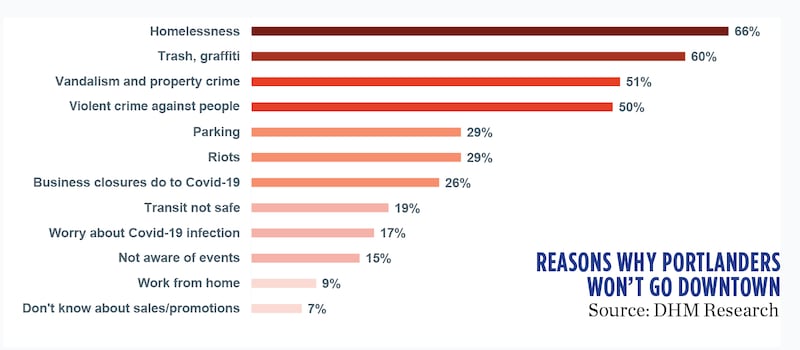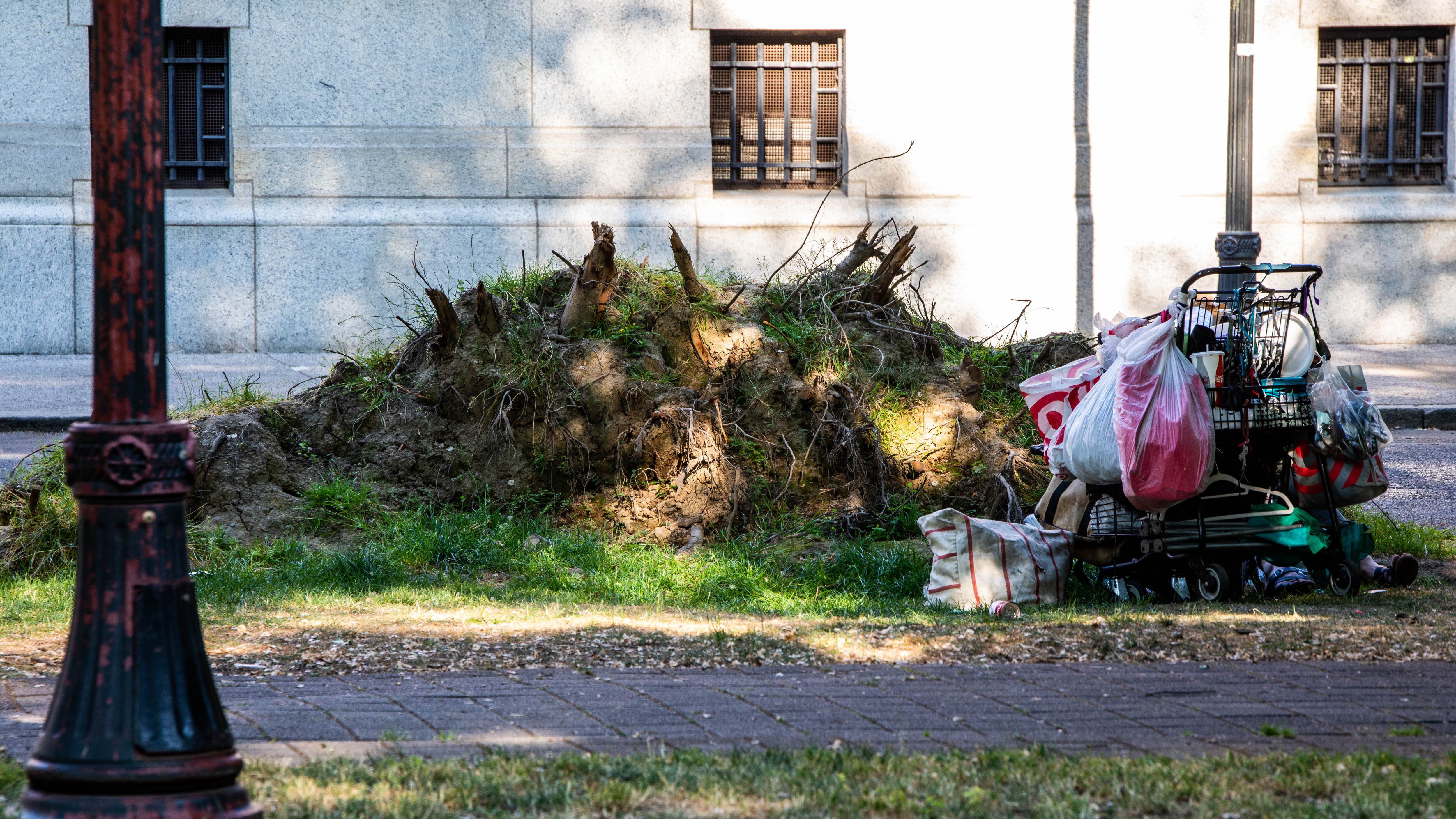It’s no secret downtown Portland is a shadow of its former self.
Cellphone data tells the tale. As WW reported earlier this month on wweek.com, researchers at the University of California, Berkeley, used GPS data to see how many people were returning to businesses, bars and restaurants in 62 downtowns around the county as the COVID-19 pandemic ebbs. In the latest period, March through May of this year, Portland came in 60th, with a recovery value of 41% compared with pre-pandemic activity. Only San Francisco (31%) and Cleveland (36%) fared worse.
Now, thanks to polling data paid for by the city and obtained by WW, we have a better sense of what’s keeping people away.
City Hall asked DHM Research to assess attitudes about downtown, city services in neighborhoods, homelessness, policing, and housing prices. DHM surveyed 500 Portland adults from May 2 to 16, asking them to complete a 12-minute survey.
The results? Almost 60% of respondents had a negative impression of downtown. Top reasons for avoiding visits downtown were homelessness (66%), trash and graffiti (60%), vandalism and property crime (51%), and violent crime (50%). Parking was next at 29%.
Even with all those problems, 57% of those polled said they were still willing to visit downtown. Those most willing tend to be younger and richer, and they are more likely to live on the west side of the Willamette River. Older citizens who live farther out are least likely to visit.
Some of the most chilling results in the poll had nothing to do with downtown at all: Only 41% of respondents felt “very safe” walking alone in their neighborhood during the day, and only 16% felt “very safe” walking alone at night. Almost half felt “somewhat unsafe” or “very unsafe” walking alone at night. Those who felt unsafe said they feared physical assault most of all (78%).
The results might explain some of Mayor Ted Wheeler’s actions recently. On Aug. 19, he extended an emergency ban to block camping around school buildings and along some routes to and from schools. And he framed the decision in terms of hazards such camps posed to kids. (That’s a shift from previous rhetoric, which emphasized the dangers faced by unhoused people.)
“School-age children should be able to walk, bike, and ride buses to get to and from schools without potentially dangerous hazards as a result of encampments, including trash, tents in the right of way, biohazards, hypodermic needles, and more,” Wheeler said in a statement.
On Monday, Wheeler touted the arrest of graffiti tagger Emile Laurent, who turned himself in on a felony warrant for “tens of thousands of dollars” in damage. Poll results showed many Portlanders were no fans of Laurent’s work, either.


